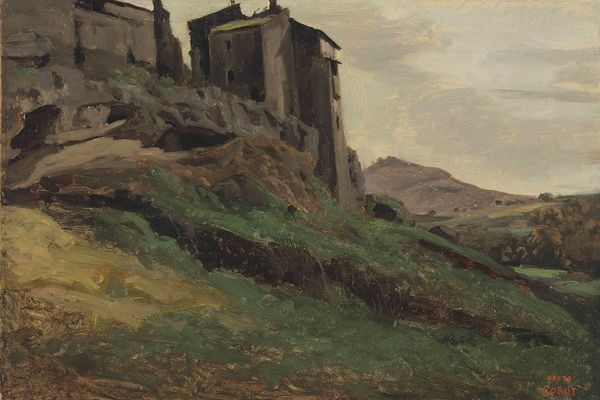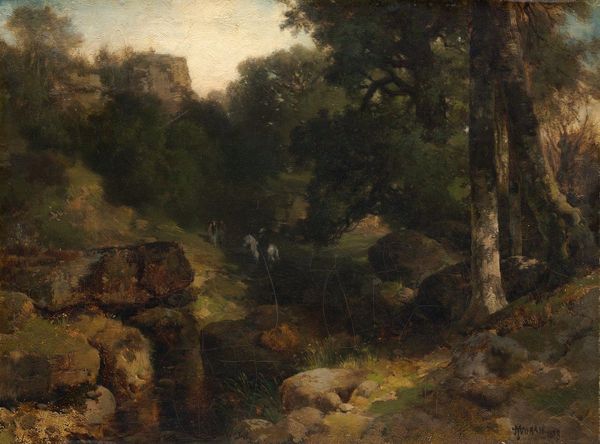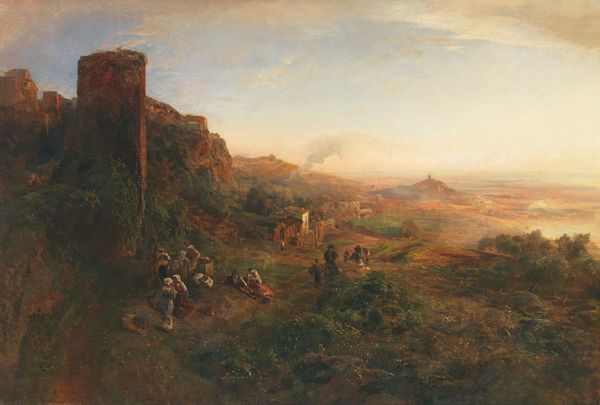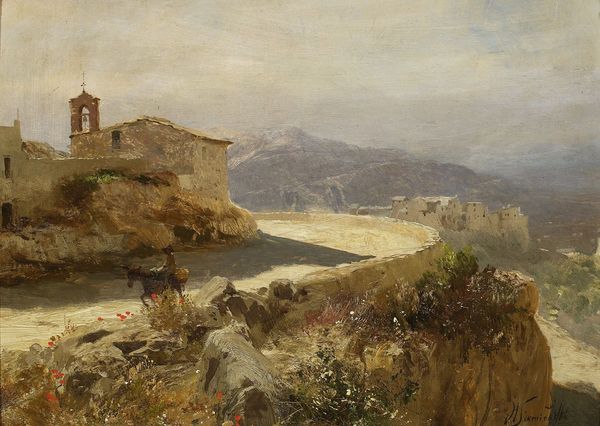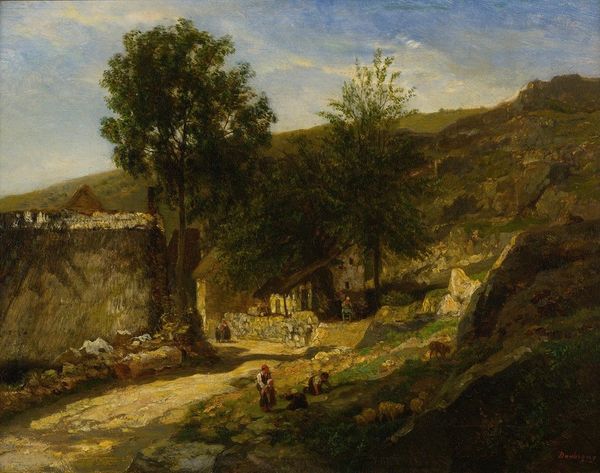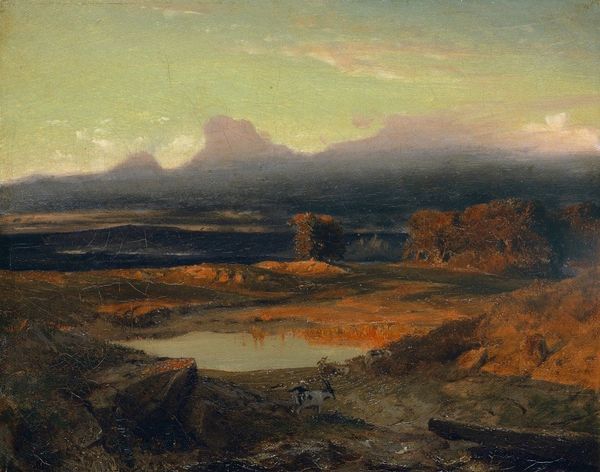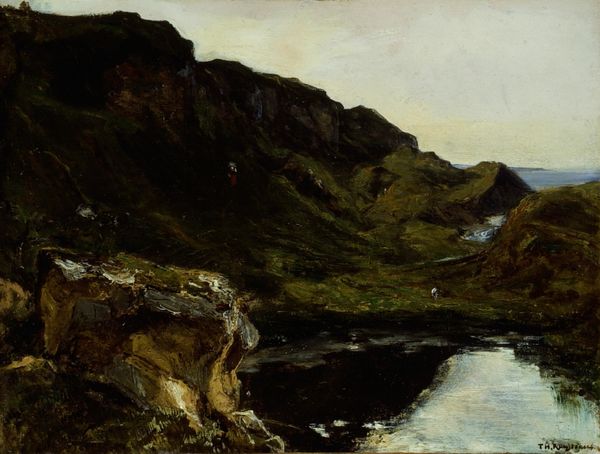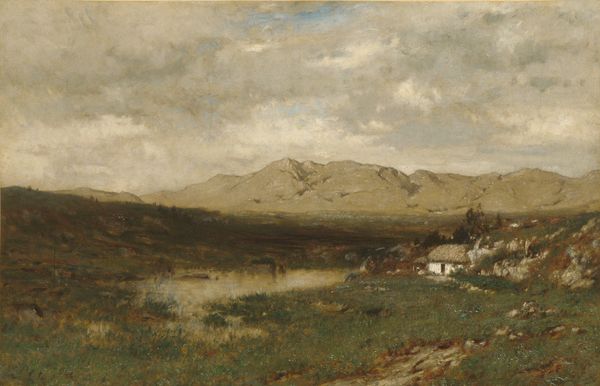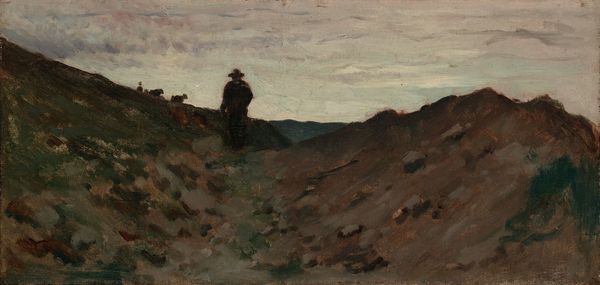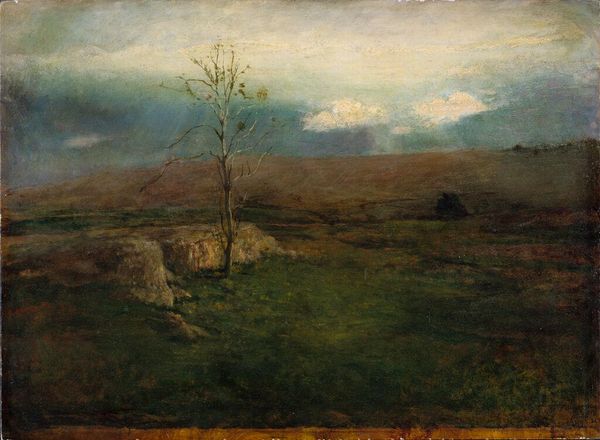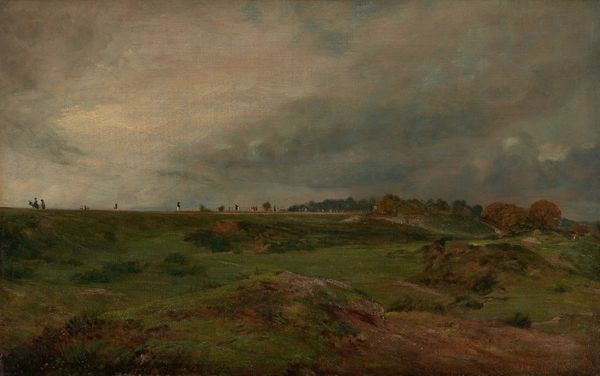
Dimensions: support: 1025 x 1537 mm
Copyright: © The estate of Arthur Friedenson | CC-BY-NC-ND 4.0 DEED, Photo: Tate
Curator: Arthur Friedenson’s "Runswick Bay," held in the Tate Collections, presents a serene landscape with figures integrated into the scene. Editor: It feels timeless, doesn't it? A woman and child feeding chickens, overlooking a quaint village. The image evokes a quiet, almost idyllic past. Curator: The depiction of rural life gained prominence in the late 19th and early 20th centuries, especially as industrialization accelerated. Friedenson, active during this period, participated in a broader artistic discourse. Editor: Absolutely. The chicken flock, though, strikes me. They are symbols of both sustenance and community. The mother-child dyad strengthens the sense of continuity in a simple, grounded existence. Curator: The social and economic context is crucial. This painting reflects a nostalgia for pre-industrial life, even as those ways of life were changing rapidly. Editor: Nostalgia, yes, but also resilience. The image subtly communicates a sense of self-sufficiency, symbolized by the figures and the chickens. Curator: A perspective well-taken. Thinking about Friedenson’s role in portraying this scene opens questions about his intended audience and the painting’s purpose. Editor: Indeed. It leaves me pondering the enduring power of such simple imagery, and its ability to connect us to bygone eras.
Comments
tate 6 months ago
⋮
http://www.tate.org.uk/art/artworks/friedenson-runswick-bay-n02138
Join the conversation
Join millions of artists and users on Artera today and experience the ultimate creative platform.
tate 6 months ago
⋮
Friedenson was born in Leeds and was initially apprenticed as a sign writer, before training as an artist in Paris and Antwerp. This picture shows the small Yorkshire fishing village of Runswick Bay. Rather in the manner of Newlyn in Cornwall, a colony of artists grew up there, and Friedenson visited it to work a number of times. It was here that he met his future wife, and after they married in November 1906, he returned to Runswick Bay the following spring in order to paint this picture. It was much admired at the Royal Academy that year, and purchased for the nation. Gallery label, August 2004
